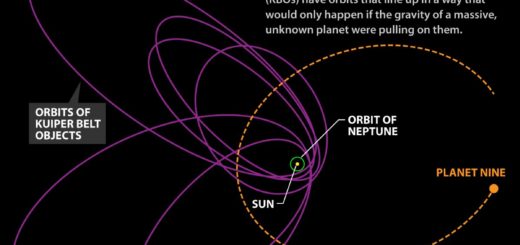First measurement of isotopes in atmosphere of exoplanet

An international team of astronomers have become the first in the world to detect isotopes in the atmosphere of an exoplanet. It concerns different forms of carbon in the gaseous giant planet TYC 8998-760-1 b at a distance of 300 light years in the constellation Musca. The weak signal was measured with ESO’s Very Large Telescope in Chile and seems to indicate that the planet is relatively rich in carbon-13. The astronomers speculate that this is because the planet formed at a great distance from its parent star. The research will be published in the scientific journal Nature on Thursday.
Isotopes are different forms of the same atom, but with varying number of neutrons in the nucleus. For example, carbon with six protons typically has six neutrons (carbon-12), but occasionally seven (carbon-13) or eight (carbon-14). This does not change much the chemical properties of carbon, but isotopes are formed in different ways and often react slightly differently to the prevailing conditions. Isotopes are therefore used in a wide range of research fields: from detecting cardiovascular disease or cancer to studying climate change and determining the age of fossils and rocks.
Quite special
The astronomers were able to distinguish carbon-13 from carbon-12 because it absorbs radiation at slightly different colors. “It is really quite special that we can measure this in an exoplanet atmosphere, at such a large distance,” says Leiden Ph.D. student Yapeng Zhang, first author of the article.
The astronomers had expected to detect about one in 70 carbon atoms to be carbon-13, but for this planet it seems to be twice as much. The idea is that the higher carbon-13 is somehow related to the formation of the exoplanet.
Co-author Paul Mollière, from the Max Planck Institute for Astronomy in Heidelberg, Germany, says, “The planet is more than 150 times further away from its parent star than our Earth is from our sun. At such a great distance, ices have possibly formed with more carbon-13, causing the higher fraction of this isotope in the planet’s atmosphere today.”
Animation on Youtube of isotopes in exoplanets (3m10s). Credit: Zhang et al.
‘My exoplanet’
The planet itself, TYC 8998-760-1 b, was discovered only two years ago by Leiden Ph.D. student Alexander Bohn, co-author of the article. “It’s awesome that this discovery has been made close to ‘my’ planet. It will probably be the first of many.”
Ignas Snellen, professor in Leiden and for many years the driving force behind this subject, is above all proud. “The expectation is that in the future isotopes will further help to understand exactly how, where and when planets form. This is just the beginning.”



 Creators of mankind
Creators of mankind Description of “Tall white aliens”
Description of “Tall white aliens” Where they came from?
Where they came from? About hostile civilizations
About hostile civilizations The war for the Earth
The war for the Earth “Tall white aliens” about eternal life
“Tall white aliens” about eternal life Video: “Nordic aliens”
Video: “Nordic aliens” Aliens
Aliens Alien encounters
Alien encounters The aliens base
The aliens base UFO
UFO Technology UFO
Technology UFO Underground civilization
Underground civilization Ancient alien artifacts
Ancient alien artifacts Military and UFO
Military and UFO Mysteries and hypotheses
Mysteries and hypotheses Scientific facts
Scientific facts


















